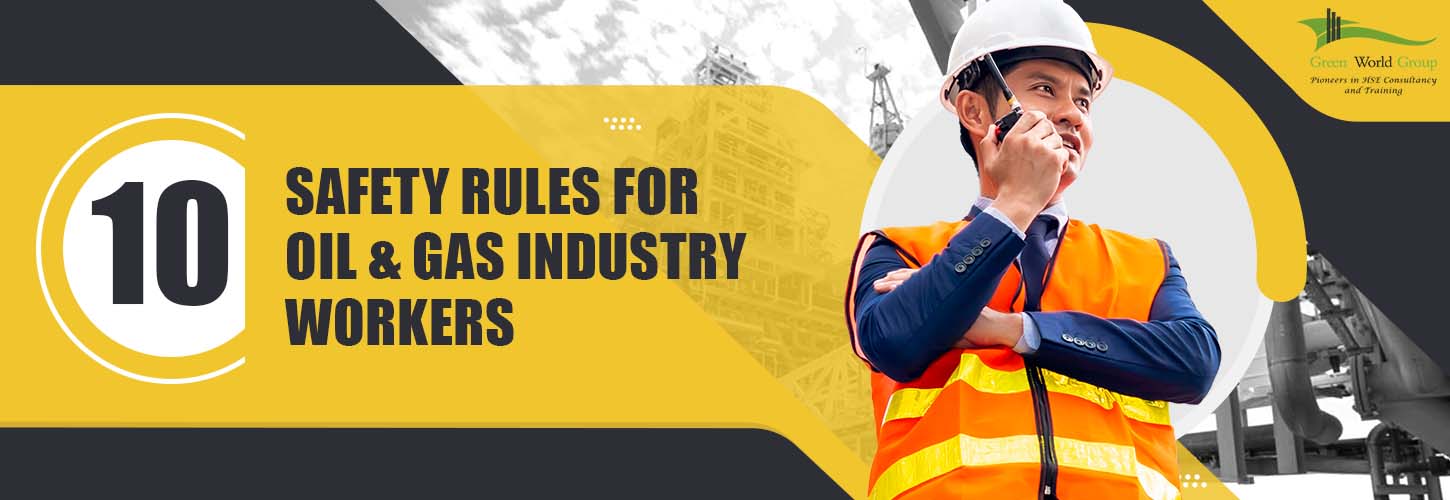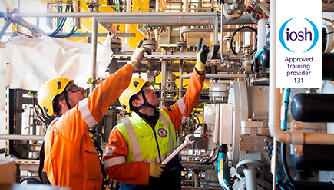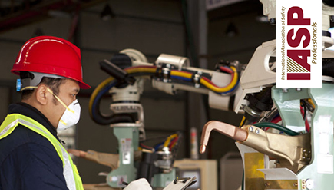
What is Industrial Safety?
Industrial safety refers to managing all operations and events within an industry to safeguard employees and assets by minimizing potential hazards, risks, accidents, and near misses. A primary goal of the directorate of Industrial Safety and Health is to ensure the safety, health, and welfare of workers in industries by effectively enforcing the provisions of the factories act and its rules.
Why safety is very much needed for Oil & Gas Industries?
Oil & Gas Industries is one of the riskiest industries, so, it deserves the utmost attention, especially in the hydrocarbon processes like exploration, refineries, pipelines and marketing installations, gas processing units, etc.
Workers in the oil and gas industry are at the highest risk of injuries and fatalities. So, it is important to re-evaluate safety programs and behavior to effectively address worker safety issues and reduce the rate of injuries and accidents in the industry.

To ensure a Safe Working Environment, apply these tips to improve worker safety:
1. Collaborate with the Local Emergency Organization
Develop a relationship with the local emergency response community and establish a uniform flow of communication to supply a higher level of overall safety. The company’s emergency responders and Safety and Health professionals must work together to utilize their resources to be able to handle emergencies successfully.
Discuss specific health and safety hazards that exist at the drilling location and determine the way to assist one another in these emergencies. If possible, take emergency responders on a tour of the drilling site or rig to offer them a clearer idea of the way to approach potential emergencies.
2. Invest in a Safety Program
Encourage the environment of open communication approach to safety training and allocate time for workers to get to know each other. Building personal connections with workers will inherently build trust and brotherhood when out in the field to improve overall safety.
3. Monitor the Mental Health of Workers
Worker culture is a huge factor that negatively affects safety in the industry. Eliminate the tough and stereotypical workers in the industry by promoting a transparent and open environment through various training techniques and team exercises. Trusting workers and building a sense of community makes it easier for them to help, obey rules, admit mistakes, and possibly make a positive and safe environment.
4. Ensure Familiarity with Worksites
Before the work begins, ensure everyone understands their worker’s role, hazards that exist, and all safety precautions. Provide workers with procedures and hazards to be fully communicated in the event of shift handovers and work site changes.
5. Consistent Housekeeping
Reduce the chances of fatal accidents by keeping floors, pathways, and all work areas clear to Prevent Trips and Falls. Implement clear signage to direct workers towards emergency and safety equipment to quickly conflict hazards.
6. Implement the Workflow
Apply strategic labeling techniques to direct, warn, and communicate a variety of different information to workers. Color-code materials in the workplace make it easier and quicker to find specific tools, equipment, and more.
7. Install In-Vehicle Monitoring System
Monitor driver behavior in vehicles to analyze concerns and poor habits to determine how to improve your vehicle safety programs and worker training.
8. Provide Clear Visual Communication
Try to eliminate miscommunication and mystification with clear and reliable signs and label to convey dangers and safety instructions. Create specific custom signs to communicate procedures to certain work crews and work sites. Replace unreadable and outdated signage as soon as possible.
9. Re-assess Safety Signage
When worksite and project changes occur, take time to assess the signs and labels in the right areas and communicate present hazards and procedures before the next project begins. This will ensure new workers with dangers and details about specific locations.
10. Stay on Top of Machine Maintenance
When working on offshore rig projects, the machines are your lifeline when you are thousands of miles from shore. Prevent premature machine failure and conduct the importance of regular maintenance checks of machinery to workers. Communicate the checks to your workers using OSHA maintenance activities.
General Duties for Employers in Oil & Gas Industries
- Employers must designate a qualified individual to oversee employees’ safety.
- Training must be provided not only for industrial employees but also for contract workers, and security personnel through experts.
- Operating manuals should be updated regularly to ensure the integrity of the safety procedures.
- Strict supervision must be followed by fire & safety personnel/site supervisors to ensure the safety of employees.
Oil & Gas Industrial Safety Training for Employees
Conducting proper employee training in any industry is a great way to demonstrate safety is the top priority at your workplace. Green World offers various Health and Safety training for Employees around the world. Our professional experienced tutors equip the learners with sufficient knowledge to manage health & safety skills at the workplace.
Safety Training for the Oil and Gas Industry
>Green World Group offers Oil & Gas Safety Courses to workers at all levels of an organization/industry to equip the potential risks related to their workplace so they can recognize the critical hazards that can threaten their health and safety.
- Health & Safety Management Training
- Personal Protection Training
- Noise Protection Training
- Emergency Training
- Handling Hazardous Material Training
- Confined Space Training
- Workplace Safety Training
- Process Hazard Analysis Training
We deliver international standard health, safety, and environmental courses such as NEBOSH Courses, OTHM Level 6 Diploma, IOSH Courses, OSHA Courses, ISO Lead Auditor Courses, ROSPA Assured HSE Courses, HACCP Food Safety Courses, ITOL Courses for individuals in the classroom and online mode for corporates and industries, we provide In-House training sessions by highly-qualified tutors in occupational health and safety management.
OUR Popular Courses
OUR Recent Blogs
Nebosh
Nebosh and Diploma Course Offers at Green World Group
When you vow to your employees a culture where health and safety
Nebosh
How to Crack the NEBOSH – IGC Open Book Examination
Welcome to Green World Group for the webinar, how to crack the Nebosh
Nebosh
Benefits of Studying NEBOSH International General Certificate
Compared with many other occupations, the scope of career opportunities
Nebosh
What are the career possibilities after NEBOSH IGC?
It is certainly a dream of anyone to pursue a career in their dream.
For more Details contact:
Mrs. Prabavathy








